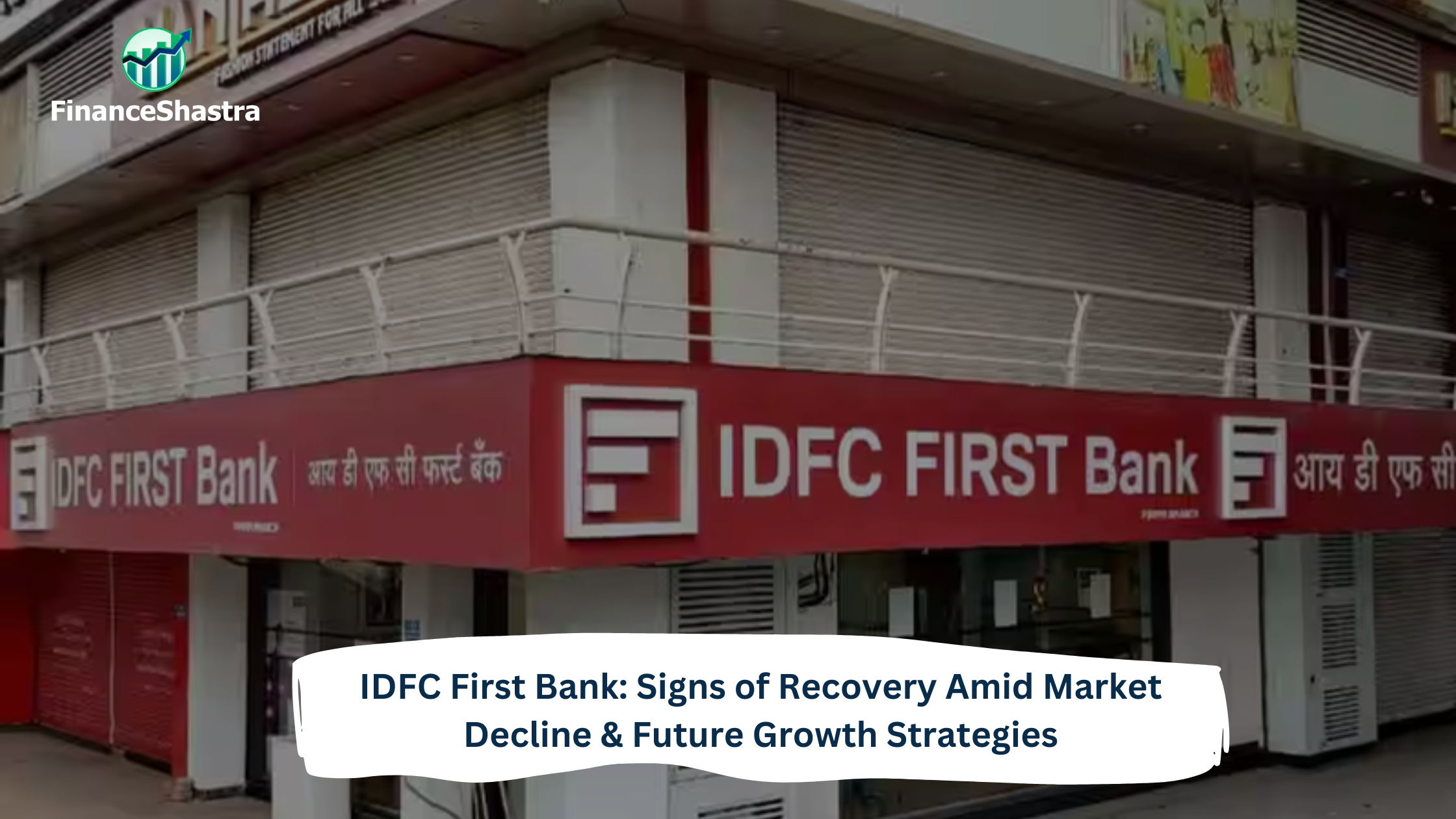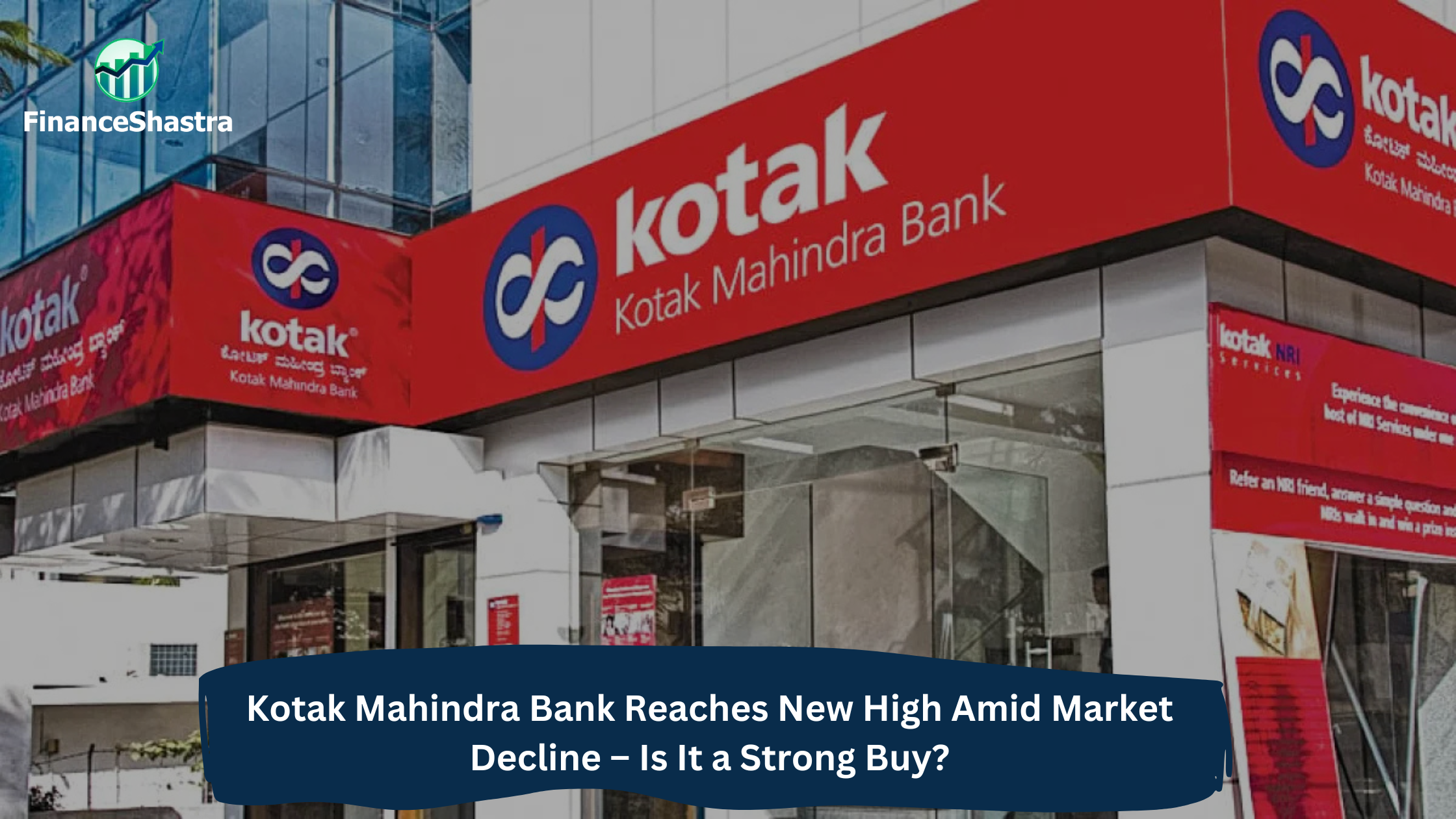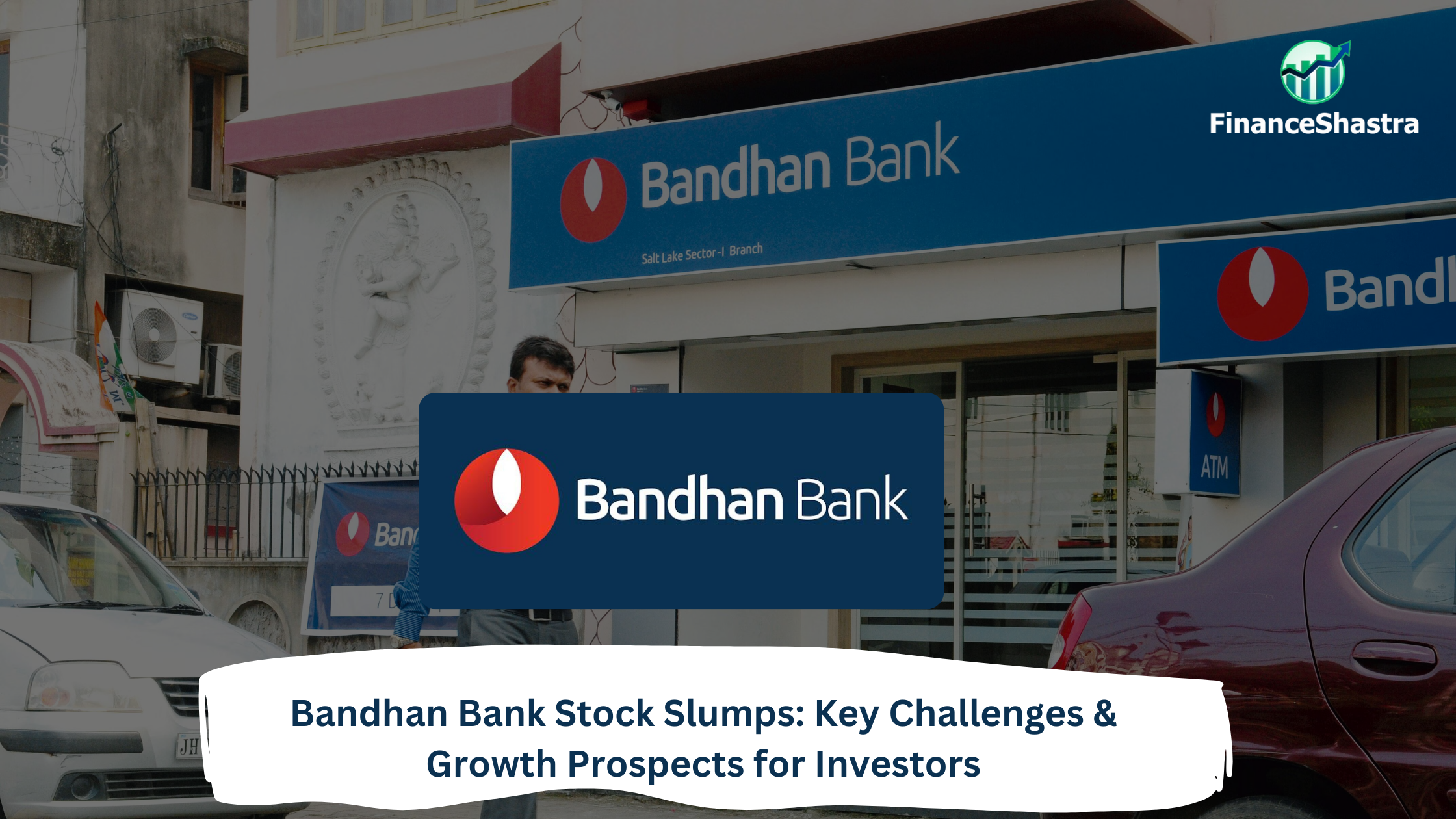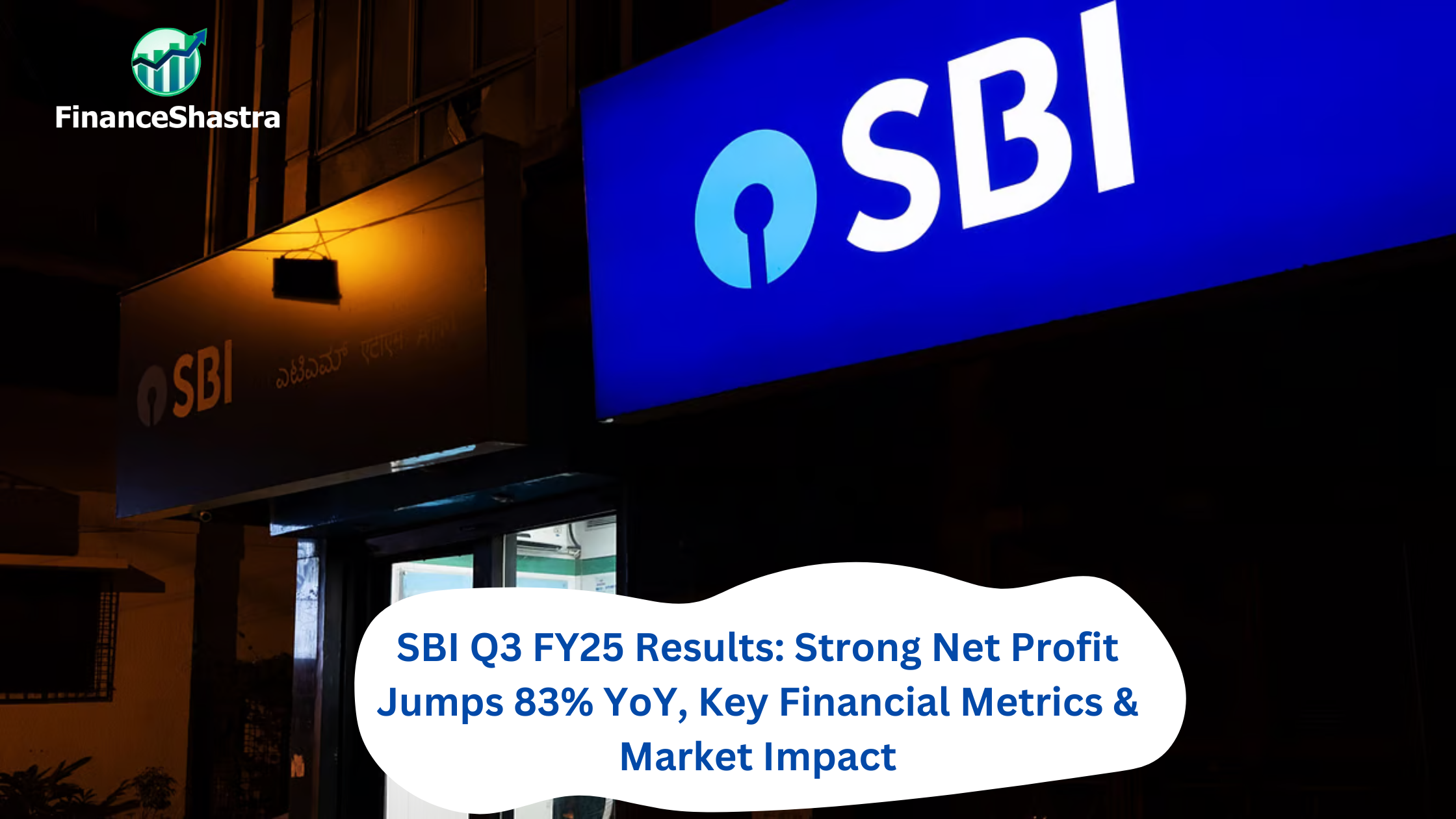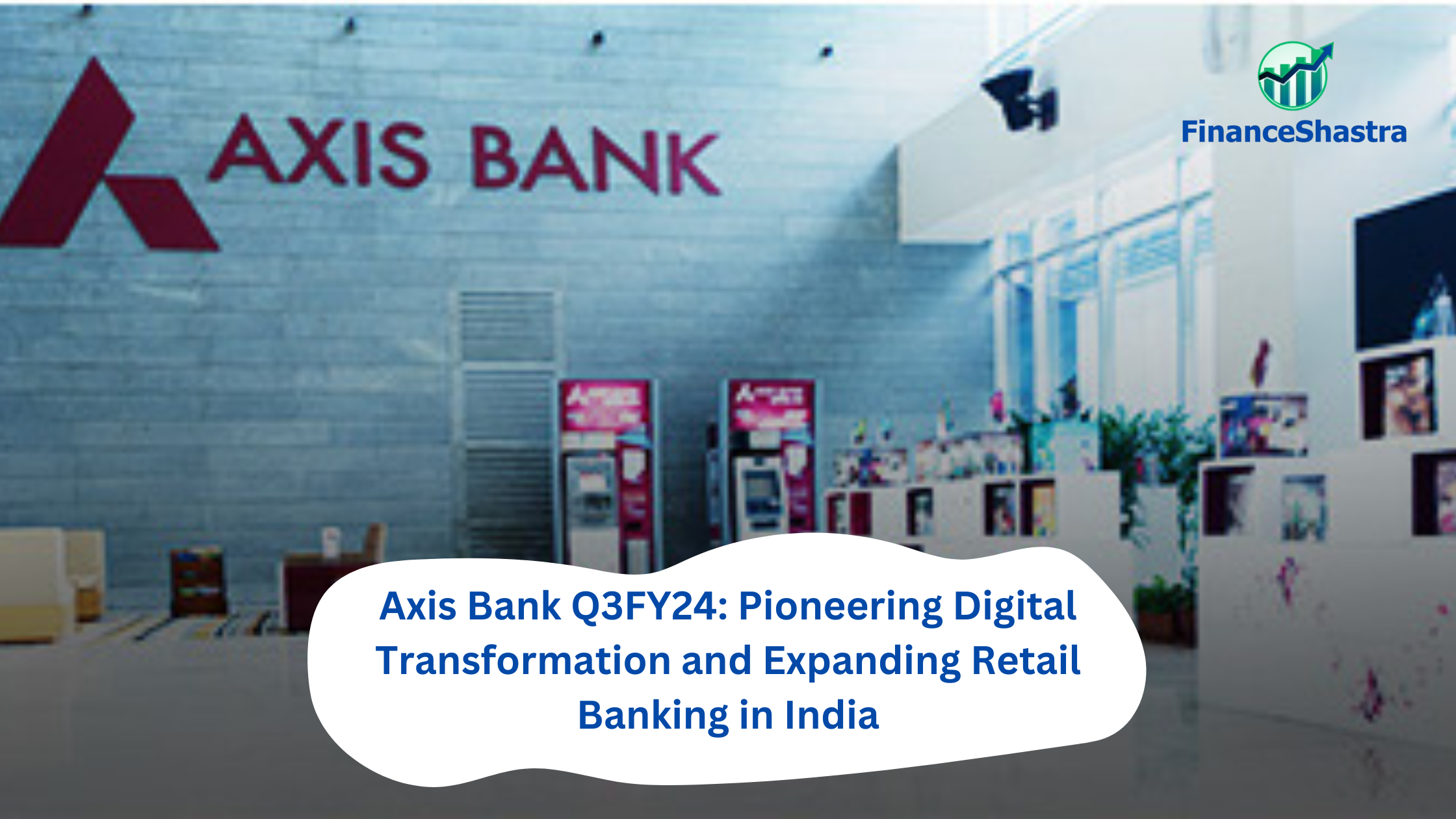IDFC First Bank: Signs of Recovery Amid Market Decline & Future Growth Strategies
Business and Industry Overview:
IDFC First Bank is a private-sector bank in India, based in Mumbai. It was created in 2015 as part of IDFC Limited, a company that originally focused on funding big projects like roads and bridges. In 2018, IDFC First Bank merged with Capital First, a company that gave loans to small businesses and people. This merger allowed the bank to focus on offering services to regular people, such as savings accounts, loans, and credit cards. In 2024, IDFC First Bank merged with its parent company, IDFC Limited, in a reverse merger. This made the bank the main company. Today, IDFC First Bank operates more than 800 branches across India and has many ATMs. The bank also provides digital banking services, making it easy for people to bank online. The bank is known for serving people in rural areas. It offers loans, especially to women. IDFC First Bank has a strong record of recovering loans. This means they have fewer bad loans. The bank also runs programs to help those in need. For example, it has a program called “Ghar Ghar Ration” that provides food to families who were affected by the COVID-19 pandemic. In 2023, the bank became the sponsor for all of India’s home cricket matches. This increased its visibility and helped the bank grow its brand. IDFC First Bank is focused on making banking easier for everyone. It uses technology to improve services and reach more people. The bank is also growing by offering good customer service, expanding its presence, and supporting community programs.
The Indian banking and fintech sectors are growing fast. The fintech industry is worth US$ 111 billion. By 2029, it is expected to reach US$ 421 billion. This growth is driven by the rise in digital financial services. More people in smaller towns and rural areas are using these services. Digital payments are becoming common. People are using UPI (Unified Payments Interface) for paying bills, shopping, and transferring money. Experts predict that 65% of payments will be digital by 2026. As more people use digital payments, the need for secure data protection grows. Banks have a trust advantage in keeping customer data safe. New fintech companies may team up with banks to meet legal requirements and get banking licenses. Technology is making banking easier. Farmers can now apply for loans online, like the Kisan Credit Card (KCC) loans. This makes the loan process faster. The government is also improving the KYC (Know Your Customer) process to make it easier for people to open bank accounts. New services are being introduced to improve digital banking. In 2023, India saw the launch of the first-ever UPI-enabled ATM. This allows people to withdraw money using their phone. Over 600 banks in India now use UPI for transactions. The total value of digital transactions has already crossed US$ 25 billion. The government is helping this growth. The RBI has started digital projects, like the digital farm loan system and a pilot for digital currency. These projects will make banking quicker and more efficient. The government is also planning a national financial information registry to store financial data securely. Banks are also working with telecom companies. For example, India Post Payments Bank (IPPB) teamed up with Airtel. They offer banking services through WhatsApp, making it more convenient for people. In summary, the Indian banking and fintech sectors are booming. The shift to digital services is helping people access banking more easily. With strong government support and innovation, the future of banking looks bright in India.
IDFC First Bank has made a strong mark in India by combining traditional banking with modern digital services. After its merger with Capital First, the bank shifted its focus to retail banking. This means it now offers services like personal loans, savings accounts, and credit cards to regular people. The bank makes it easy for customers to bank through mobile apps and online services. It also offers banking in small towns and rural areas, which are often left out by other banks. The bank has a good reputation for being reliable, with low levels of bad loans. It partners with telecom companies to make banking even more accessible, like offering services on WhatsApp. Its focus on innovation, rural banking, and partnerships gives it a competitive edge over other banks. Overall, IDFC First Bank is a strong player in India’s banking sector.
Latest Stock News:
IDFC First Bank has started to recover after four days of decline. Despite a tough market, its stock performed better than others in its sector. It reached a high during the day, but the movement of its stock is showing mixed signals. Even though there were some short-term drops, the bank has grown a lot over the past few years. Jefferies, a global financial services company, sees IDFC First Bank as a good growth option compared to other banks. The bank’s stock has been unpredictable. In March 2025, the stock dropped by 3% after the bank announced its quarterly results. The drop was mainly due to higher credit costs, which affected the bank’s profit and assets. In the second quarter of the fiscal year 2025, the bank’s profit fell by 73%, to ₹200.7 crore. However, its Net Interest Income (NII) grew by 21% during the same period.
In February 2023, IDFC Limited invested ₹2,200 crore in IDFC First Bank, increasing its stake to 40%. Later in September 2023, US-based GQG Partners bought more shares, increasing their ownership to 3.36%. In July 2024, Life Insurance Corporation (LIC) also bought shares, bringing its stake to 2.68%.
On March 27, 2025, IDFC First Bank shares fell by 1.50% after a block deal. The stock opened at Rs 56.84 on the NSE, down from the previous close of Rs 57. It hit a low of Rs 56.12 during the day and closed at Rs 56.18 around 2 PM. A total of 82.3 lakh shares of IDFC First Bank changed hands in a block deal, but the names of the buyer and seller are not known yet.
Potentials:
IDFC First Bank has plans to grow and improve. It wants to make banking easier for everyone. The bank will focus on online banking. This means people can manage their money and accounts on their phones or computers. The bank also wants to give better loan options. It will make it easier for people to get loans. It will also improve savings accounts to make them more helpful. IDFC First Bank is working to reach more people, especially in small towns and villages. It plans to make mobile banking better. This will help people who live far from the bank to still use its services. The bank wants to make paying bills easier, too. It will improve digital payments and work with UPI (Unified Payments Interface). The bank will also look at using new technology like digital money to make payments faster and safer. The bank is also focusing on avoiding bad loans. It will make sure to lend money carefully. This will help the bank avoid losing money and keep making profits. Finally, the bank wants to bring in more money from investors. IDFC First Bank has already received money from companies like IDFC Limited, GQG Partners, and LIC. This will help the bank grow and offer more services. In short, IDFC First Bank wants to grow by improving digital banking, offering better loans, reaching more people, and attracting investors.
Analyst Insights:
- Market capitalisation: ₹ 41,631 Cr.
- Current Price: ₹ 56.9
- 52-Week High/Low: ₹ 86.1 / 52.6
- Stock P/E: 21.7
- Dividend Yield: 0.00%
- Return on Capital Employed (ROCE): 6.93%
- Return on Equity: 10.1%
IDFC First Bank has shown some concerning signs in recent times. While the bank has been able to report profits, the growth has been slowing down. For instance, its net profit dropped by 53% in the last quarter, showing that earnings have been weaker than expected. Additionally, the bank’s stock price has fallen by about 29% in the past year, which indicates that the market is not very confident in its future performance. One key indicator is the return on equity (ROE), which measures how well a company is using its equity to generate profits. IDFC First Bank’s ROE is at 10.1%, which is lower than many of its competitors, like HDFC Bank and ICICI Bank, which have higher ROE percentages. This lower ROE suggests the bank might not be using its resources as effectively as other banks in the market. Furthermore, IDFC First Bank’s price-to-earnings (P/E) ratio stands at 21.7, which is relatively high compared to other major banks. A higher P/E ratio often means that a stock is more expensive compared to its earnings, which could indicate that the stock might be overvalued at the moment. The bank has also not been paying any dividends to its shareholders. Many investors rely on dividends as a source of income, and the fact that IDFC First Bank hasn’t paid any can be a concern for income-focused investors. Lastly, the bank has high liabilities, which are financial obligations or debts. In the most recent data, the bank’s contingent liabilities were over ₹3 lakh crore, which could be risky for the future if the bank faces financial stress. Given these factors, the bank’s financial health seems to be under pressure, and the stock price has been declining. These signs suggest that the stock may not be a good investment right now for those looking for steady growth or income.

